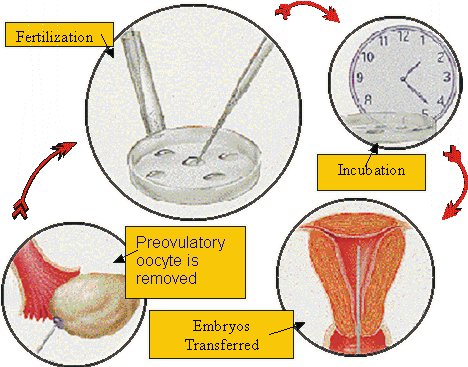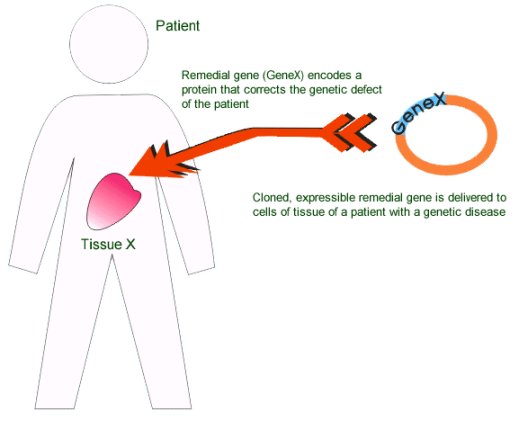Therapy
In Vitro Fertilization (IVF)IVF can be used as an effective treatment for infertility of all causes except for women with infertility due to anatomical problems with the uterus, such as severe intrauterine adhesions.
IVF is involved in taking eggs from the woman, fertilizing them in the laboratory with her partner's sperm and transferring the resulting embryos back to her uterus 2-6 (usually 2 or 3) days later.
The first IVF baby in the world was born in July 1978 in England. Today, many thousands of children are born annually as a result of this technique.
Procedure of In Vitro Fertilization
1. The woman receives injections of a hormone which stimulates her ovaries to release eggs (ovulation).
2. The preovulatory oocyte is removed from her with a suction device.
3. In the meantime, sperms from a male are placed in a solution that simulates fluid in the oviducts.
4. After the sperm and suctioned oocyte have been in contact for a few hours in a petri dish, fertilization may occur.
5. Twelve hours later, the zygote is transferred to a solution that can sustain it through the initial cleavages.
6. Two to four days later, the resultant embryos are transferred to the female's uterus.
7. The transferred embryos will hopefully implant, develop and eventually result in a live birth.
Reference
http://www.conceive.org/Gene Therapy
Gene therapy encompasses all treatments in which genetic materials are introduced into cells to help the organism to overcome certain diseases.
In most cases it is to add a specific gene into a certain cell type, with the purpose to compensate for an ineffective or missing gene.
Most of the developed countries have started clinical trials on gene therapy.
Two Approaches for Gene Therapy
(A) Ex vivo gene therapy - When the gene-receiving cells are first isolated from the body and treated outside the body before re-introducting into the patient.
(B) In vivo gene therapy - When the cells in the body are treated by introducing the gene directly into the body.
Ex vivo Gene Therapy
Ex vivo gene therapy is usually performed on a specific target cell that can be isolated, e.g. bone marrow cells, hepatocytes and tumor cells.
Usually, ex vivo gene therapy involves the following procedures:
1. Collect cells from an affected individual.
2. Correct the genetic defect by gene transfer into the isolated cells.
3. Select and grow the genetically corrected cells.
4. Either infuse or transplant them back into the patient.
In vivo Gene Therapy
In vivo gene therapy is performed using:
1. Local administration for local transfection and effects (e.g. tumors),
2. Local administration in order to induce systemic effects, (e.g. Vaccines),
3. Systemic administration through targeted delivery of genetic material by parental and non-parental administration.
Copyright(c)2002 HKIEd. All Rights Reserved.
請採用 Internet Explorer 4.0 或 Netscape Navigator 4.0 或以上瀏覽器,並以800x600解析度瀏覽。


